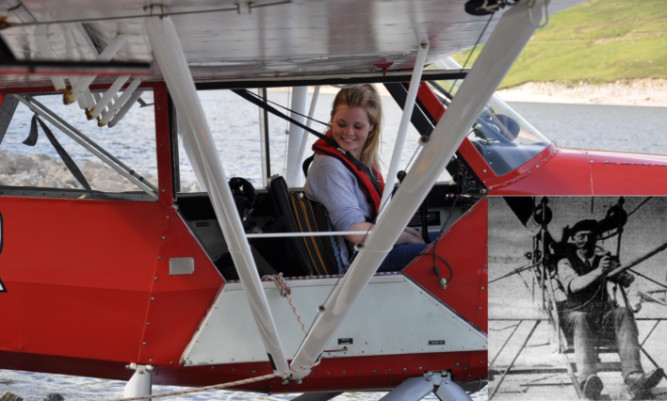A Perthshire woman has become one of Scotland’s youngest seaplane pilots more than 100 years after her ancestor built the first water-going aircraft in the UK.
Natasha Seel, 23, was inspired to take up the controls of the difficult-to-fly aircraft after seeing a 1911 picture of her great, great, great uncle, aviation pioneer Edward Wakefield, with his pride and joy Waterbird.
Waterbird was the first consistently successful British seaplane, completing around 60 flights. Passengers were carried through the winter of 1911 and 1912, but in March Waterbird was destroyed in its lakeside hangar by a storm.
Following in Wakefield’s footsteps, Natasha gained her private pilot’s licence in 2009 and had her first lesson in a seaplane just a few months later.
Natasha, from Glen Lyon, applied last year for funding to train as a seaplane pilot before gaining her licence in November.
She said: “Since getting my private pilot’s licence in 2009 I have had a burning desire to get my seaplane rating.
“I had discovered the origins of the seaplane when I first saw photographs of my great, great uncle posed next to his pride and joy ‘Waterbird’ in November 1911.
“This was the first plane to successfully take off and land on water in Britain and is the source of my inspiration to fly with a buoyant undercarriage.
“In July 2010 I was fortunate to have a lesson in the beautiful A1 Husky Amphibian, ingeniously named G-WATR, in Perthshire. I was immediately captivated by this type of flying one moment you’re a speed boat and the next you’re a plane.”
The St Andrews University student added: “I decided to apply for a bursary with the Air League early in 2012, explaining why I wanted to get my seaplane rating.
“I started training in August 2012. There were challenges seaplanes are different to handle than landplanes in some respects. For instance, your approach to landing depends entirely on the surface texture of the water at any one time.”
The weather meant Natasha’s practical skills test was postponed until the end of November, when she flew over Loch Awe. The calmer conditions presented their own problems.
Natasha said: “It was a beautiful flight on an extremely crisp day with barely any wind. When we got to Loch Awe the water was so glassy that coming in to land was harder than ever all I could see was our reflection in the water.”
She added: “I am indebted to the Air League and my sponsor, without whom I would not have had the opportunity to undertake this rating. I recommend any other keen pilots to apply for bursaries with the Air League, especially students, as there are some fantastic opportunities available.”
Andrew Brookes, director of the Air League, said: “Natasha aspired to carry out seaplane training in Perthshire, and the Air League Trust is very happy that it could help her to realise her dream.”
